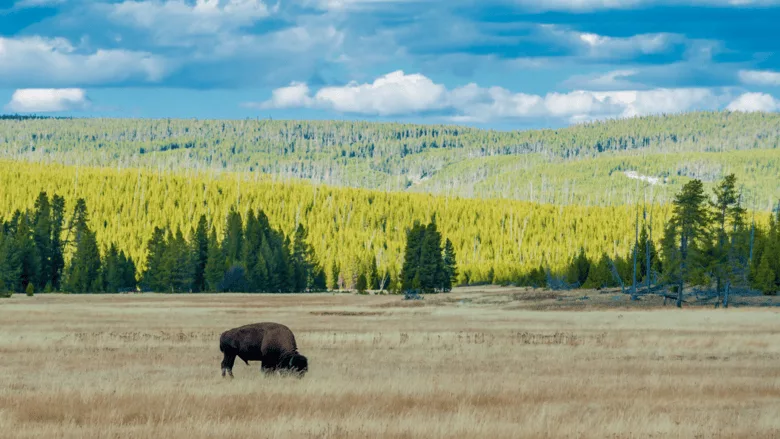Over One Thousand National Park Sites Open for Mining
Approval of Mojave Mine May Signal More Mineral Developments in Western Parks

Image via Boyd Hendrikse from Getty Images
An escalating push for domestic mineral extraction may be reopening the door to industrial activity in some of America’s most protected public lands—including within national parks.
A recent federal green light for mining in California’s Mojave National Preserve is being seen as a sign of things to come for a broader mining surge across the West.
The move comes amid a national policy directive from President Donald Trump aimed at expanding access to so-called "strategic minerals" deemed critical for energy and defense industries. But documents obtained through the Freedom of Information Act (FOIA) by watchdog group Public Employees for Environmental Responsibility (PEER) reveal the extent to which national park sites could be affected: over 1,000 valid mining claims exist within current park boundaries, most of them in western states.
“The almost forgotten mining legacy on what are now national park lands may leap back to life in a national drive to extract strategic minerals,” said PEER Executive Director Tim Whitehouse. “The prospects for mining in national parks will not be quickly or inexpensively diminished.”
The National Park Service (NPS) records show 1,067 valid mining claims in 15 park units across the country. These include 635 unpatented claims—essentially exploration rights still subject to federal approval—and 432 patented claims, which are fully privatized through government-issued titles.
While the 1976 Federal Land Policy and Management Act banned new mining claims within park boundaries, existing claims that predate park designations were grandfathered in. That obscure legal loophole now threatens to reignite industrial activity in areas long thought protected.
The Pacific West Region holds the highest concentration of claims (645), with Death Valley National Park and the Mojave National Preserve leading the pack. Alaska follows closely, with 402 claims—most concentrated in Wrangell-St. Elias National Park and Preserve, the largest unit in the park system.
Mojave Mine: A Test Case for the Future?
The flashpoint in this brewing controversy is the Colosseum Mine in Mojave National Preserve. On April 8, 2025, the Bureau of Land Management (BLM), under the Department of the Interior, announced that an Australian mining company had been given approval to continue operations at the site—despite no official plan being submitted or approved by the National Park Service, as required under federal law.
PEER contends that Interior Secretary Doug Burgum, appointed under Trump’s executive directive, has prioritized mining expansion without sufficient consultation from the Park Service.
The situation is exacerbated by the fact that there is currently no National Park Service Director—or even a nominee—serving in the administration.
“Since there is currently no National Park Service Director, or even a nominee, there is likely no official parks representative at the table urging protection of park resources,” Whitehouse noted. “What is now unfolding at this one mine in Mojave may be repeated several hundred more times in the coming days.”
This is information straight from the National Park Service government website:
-
Who is the director of the National Park Service? The position of director of the National Park Service is currently vacant.
-
What government agency oversees the National Park Service? The National Park Service is a bureau of the Department of the Interior. Directly overseeing its operation is the department's Assistant Secretary for Fish and Wildlife and Parks.
- How many employees are in the National Park Service? Permanent, temporary, and seasonal employees: Approximately 20,000. Volunteers: More than 138,000 in fiscal year 2024.
Trump’s executive order on strategic minerals instructed the Department of the Interior to identify and expedite access to mineral-rich sites. Critics argue this directive prioritizes short-term industrial gain over long-standing conservation policies.
The legality of mining within national parks may hinge on how aggressively the administration pushes for development and how courts interpret protections under the National Environmental Policy Act and other statutes. Environmental groups are already signaling potential legal challenges.
And with only 35 mining claims retired in the last decade, according to PEER, many of these sites may now move from dormant records to active projects.
Whether the Colosseum Mine becomes an isolated incident or the first domino in a new mining wave remains to be seen. What’s certain is that the debate over the use—and preservation—of America’s public lands is far from settled.
Looking for a reprint of this article?
From high-res PDFs to custom plaques, order your copy today!





